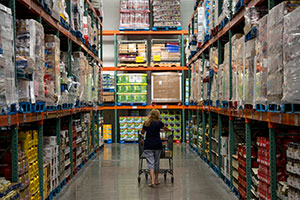Consumer Sentiment Surges to 11-Year High

Consumer confidence jumped in January to the highest level in 11 years as steady job gains and plunging gas prices brightened the outlook for U.S. households.
The University of Michigan preliminary consumer sentiment index rose to 98.2, the highest since January 2004, from a final reading of 93.6 in December. The median estimate in a Bloomberg News survey of 70 economists projected an increase to 94.1.
Trips to the pump that are costing less and less and job gains that have accelerated are helping Americans feel more optimistic about the economic recovery, now in its sixth year. Continued gains in confidence combined with stronger wage growth will be needed to embolden consumers to go out and spend their savings on purchases from vehicles to homes.
“The consumer is in very good shape,” Ryan Sweet, senior economist at Moody’s Analytics Inc., said before the report. “They’re getting a significant tailwind from lower gasoline prices, the job market is improving, stock prices are trending higher and house prices are rising.”
Forecasts for the Michigan index in the Bloomberg survey ranged from 91 to 99. The index averaged 84.1 last year.
The sentiment survey’s current conditions index, which measures Americans’ assessment of their personal finances, increased to 108.3 this month, the highest since January 2007, from 104.8. The measure of expectations six months from now rose to 91.6 from 86.4 in December.
“Gains in employment and incomes as well as declines in gas prices were cited by record numbers of consumers,” Richard Curtin, director of the Michigan Survey of Consumers, said in a statement. “More consumers spontaneously cited increases in their household incomes in early January than any time in the past decade.”
Americans expected an inflation rate of 2.4% in the next year, the lowest since September 2010, and down from 2.8% in December.
The decrease reflected the drop in gasoline prices, said Curtin.
Over a longer term, five years to 10 years, they projected prices would rise 2.8%, the same as in the prior month.
While confidence had been slow to recover in the wake of the recession, job growth that’s finally picking up steam is probably supporting consumers’ outlooks.
Payrolls climbed by 252,000 workers in December following a 353,000 increase the prior month, and the jobless rate declined to 5.6%, the lowest level since June 2008, Labor Department figures released Jan. 9 showed. Wage growth remained meager, with average hourly earnings rising just 1.7% in the 12 months ended December, the least in two years.
Meanwhile, more Americans filed applications for unemployment benefits last week, probably an indication that companies let go of seasonal workers following the holidays. Jobless claims climbed by 19,000 to 316,000 in the week ended Jan. 10, the most since early September, from a revised 297,000 in the prior period, a Labor Department report showed Jan. 15.
The cheapest gas in more than five years is expected to lift consumers’ spirits by helping stretch paychecks a little further. The price of a gallon of regular gasoline was $2.09 on Jan. 14, the lowest level since May 2009, according to U.S. auto group AAA.
“Households have cited falling energy costs in addition to improving job prospects as the two factors lifting confidence,” Joseph LaVorgna, chief U.S. economist at Deutsche Bank Securities Inc. in New York, wrote in a Jan. 15 e-mail to clients. “Over time, the trends in consumer confidence and spending tend to move hand-in-hand.”
Low oil prices and wage growth are bolstering the outlook for companies such as Wells Fargo Co., the largest U.S. home lender.
“There have been many signs of strength in the U.S. economy,” Chief Executive Officer John Stumpf said on a Jan. 14 earnings call. “I don’t think this is a breakout, but I think we’re on our front foot and consumers’ confidence is at an all-time high since the downturn. So the way I read the tea leaves, I am optimistic.”




